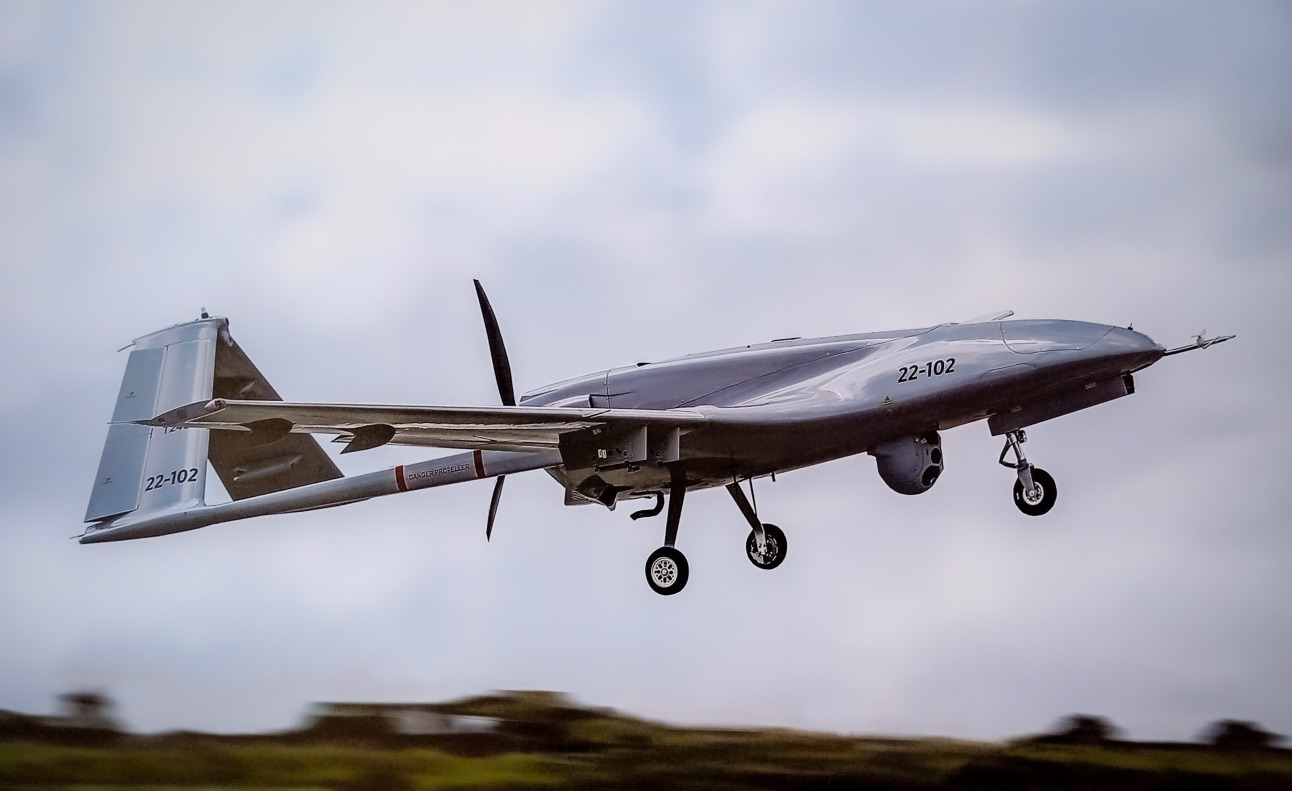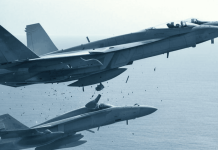In a move likely to exacerbate tensions in the Indian Ocean region, the Maldives has recently begun receiving Bayraktar TB2 combat drones from Turkey. The move is set to heighten tensions between the Maldives and India as the former looks to ‘dance on Chinese tunes.’
This significant acquisition represents the Maldives National Defence Force’s first deployment of military drones, a strategic move aimed at bolstering national security and surveillance capabilities.
Shortly after assuming office in November 2023, President Mohamed Muizzu made Turkey his first foreign-visit destination. There, he inspected various military equipment and reportedly forged an agreement with a Turkish company to acquire military drones.
Although the Maldivian government has not disclosed specific details of the agreement, Turkish media has reported that the deal encompasses the supply of a command control station along with six TB2 unmanned combat aerial vehicles (UCAVs) to fulfill the security needs of the Maldivian armed forces.
In line with this initiative, efforts are underway to establish a drone base in Noonu Atoll Maafaru to oversee the operation of these Turkish drones, ensuring effective monitoring of the Maldives’ ocean territories.
These drones, delivered on March 3, are currently stationed at Maafaru International Airport in Noonu Atoll, according to the Maldives Republic.
An image circulating on social media platforms further validates the presence of Turkish drones at the designated site, signaling the operational readiness of this latest addition to the Maldivian military arsenal.
President Muizzu, known for his pro-Beijing stance, had previously hinted at the government’s intention to acquire surveillance drones during his visit to China earlier this year.
In a further demonstration of its commitment to maritime security, President Muizzu announced plans to establish a 24/7 monitoring system for Maldivian waters. This initiative, slated for implementation later this month, aims to assert control over the Maldives’ Exclusive Economic Zone (EEZ) despite its extensive maritime boundaries.
Earlier this year, it was also reported that the President’s Office adjusted the Import Duty Waiver Procedure, which grants the President the authority to exempt import duties on goods intended for use by the security services. This adjustment is seen as a measure aimed at streamlining the acquisition process for military drones.
Tensions With India
The recent drone delivery comes amid escalating tensions between the Maldives and India following Muizzu’s ascent to power last year. The catalyst for the tensions came with the election of President Muizzu last October, who campaigned on a promise to steer the Maldives away from its pro-India stance.
Since assuming power, Muizzu has been vocal about his dissatisfaction with the presence of Indian troops in the Maldives, calling for the withdrawal of nearly 80 military personnel stationed there to provide technical and medical assistance.
According to reports, India has commenced the withdrawal of military personnel operating surveillance aircraft within the Maldives. Twenty-five Indian troops stationed in the southernmost atoll of Addu left the archipelago before March 10.
These moves come amid growing discord between the two nations, exacerbated by a series of controversies earlier this year.
In January, tensions reached a boiling point when Maldivian ministers, including the deputy minister, made racist remarks targeting India and ridiculed Prime Minister Modi’s initiatives. This sparked outrage among Indians, leading to calls for a boycott of the Maldives on social media.
Although the Maldivian government distanced itself from the derogatory remarks and suspended the ministers involved, the damage to bilateral relations was done.
As India grappled with the fallout, the Maldives took further steps to solidify its new alliance with China. Moreover, following the exit from a hydrography agreement with India, the Maldives swiftly inked a “military assistance” deal with China, signaling a strategic realignment.
The Maldivian defense ministry stated that the agreement was aimed at cultivating “enhanced bilateral relations” and confirmed that China would provide training to its personnel as part of the pact.
In January, upon returning from a state visit to China, Muizzu addressed reporters at Velana International Airport, discussing his country’s defense without directly mentioning India.
He emphasized that the Maldives isn’t situated near any single nation, asserting, “Even though our islands are small, we are a huge country with a very large exclusive economic zone of nine lakh square kilometers. Maldives is one country that holds the largest proportion of this ocean. This ocean is not the property of a specific country.”
Concerns For Indian Defence Planners
Maj Gen (Dr) Mandip Singh, Senior Fellow at the Manohar Parrikar Institute for Defence Studies and Analyses, wrote on the ramifications of the recent deployment of Turkish Bayraktar-TB2 drones in the Maldives concerning India’s security.
He said, “The TB2 deal between Maldives & Turkey is valued at $37mn. The cost per piece is approximately $5mn. It would be fair to assume that Maldives have gone for a flight of six TB2 drones with GCS & ancillaries. The reason for procuring these drones is patrolling of the 9 mn sq km of Maldives EEZ.”
Maj Gen Singh explained, “The Maldives consist of 26 atolls, roughly extending North to South to a distance of 820 km. The East-West extent is much narrower, at a maximum of 130 km. There are five international airports in the Maldives, but two main ones are Male in the Centre and Maafaru on the Noonu Atoll in the North.”
“The Minicoy islands of India are 275 km to the North from Maafaru airport while the West Coast of India is 550 km (Kochi) to 495 km (Trivandrum). The TB2 landed at Maafaru International Airport transported in a third-country commercial aircraft. Notably, there are 17 airstrips on the 26 atolls in the Maldives dotting the entire island chain,” he added.
Singh raised the question of why the TB2 drones were stationed in the northern region despite the EEZ covering the entire expanse of the 820×130-kilometer island chain.
He then elucidated that the strategic rationale becomes apparent when considering the presence of major airstrips in the northern atolls, specifically Hoarafushi and Hanimaadhoo international airports, situated near the Minicoy islands of India.

With a communication range of 300 kilometers, TB2 drones stationed at these airfields can effectively monitor critical sea lanes, including the 9-degree channel separating Minicoy from the northern Maldivian atolls.
According to Singh, this capability enables surveillance of Indian naval movements along the west coast and air traffic in the region, particularly with India’s announcement of an INS Jatayu naval base on the Minicoy islands.
He also observed that the potential for joint patrols with Pakistan, a country that also utilizes TB2 drones, may be considered based on past agreements with the Maldivian government.
With a pro-China administration in power in the Maldives and increasing military cooperation between Turkey and China, Indian defense planners must closely monitor the implications of TB2 drone deployment in the region.
The potential implications of this deployment, including the involvement of Turkish or other foreign forces in training the Maldives National Defence Force (MNDF), necessitate vigilant observation and strategic planning from India’s perspective.
- Contact the author at ashishmichel(at)gmail.com
- Follow EurAsian Times on Google News




